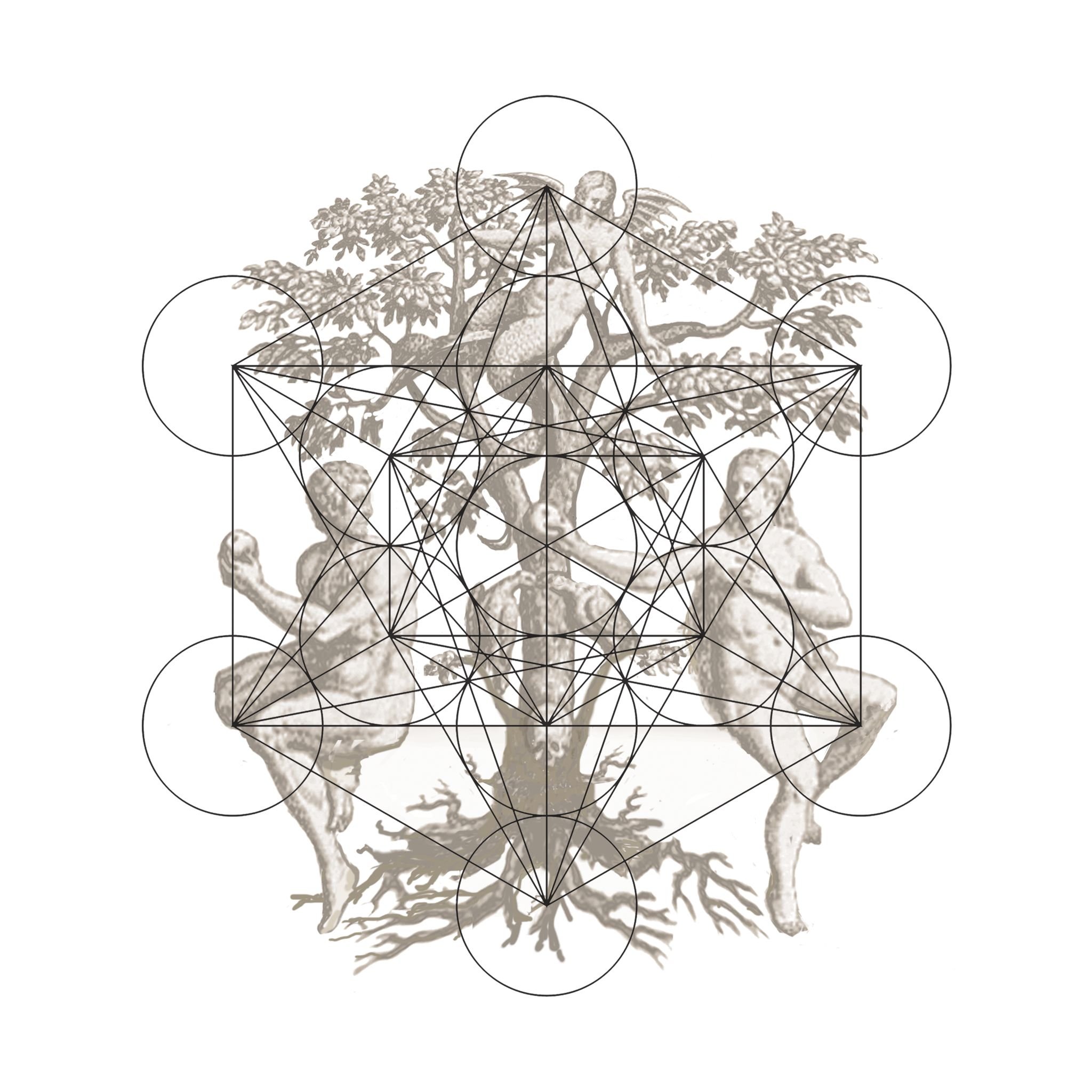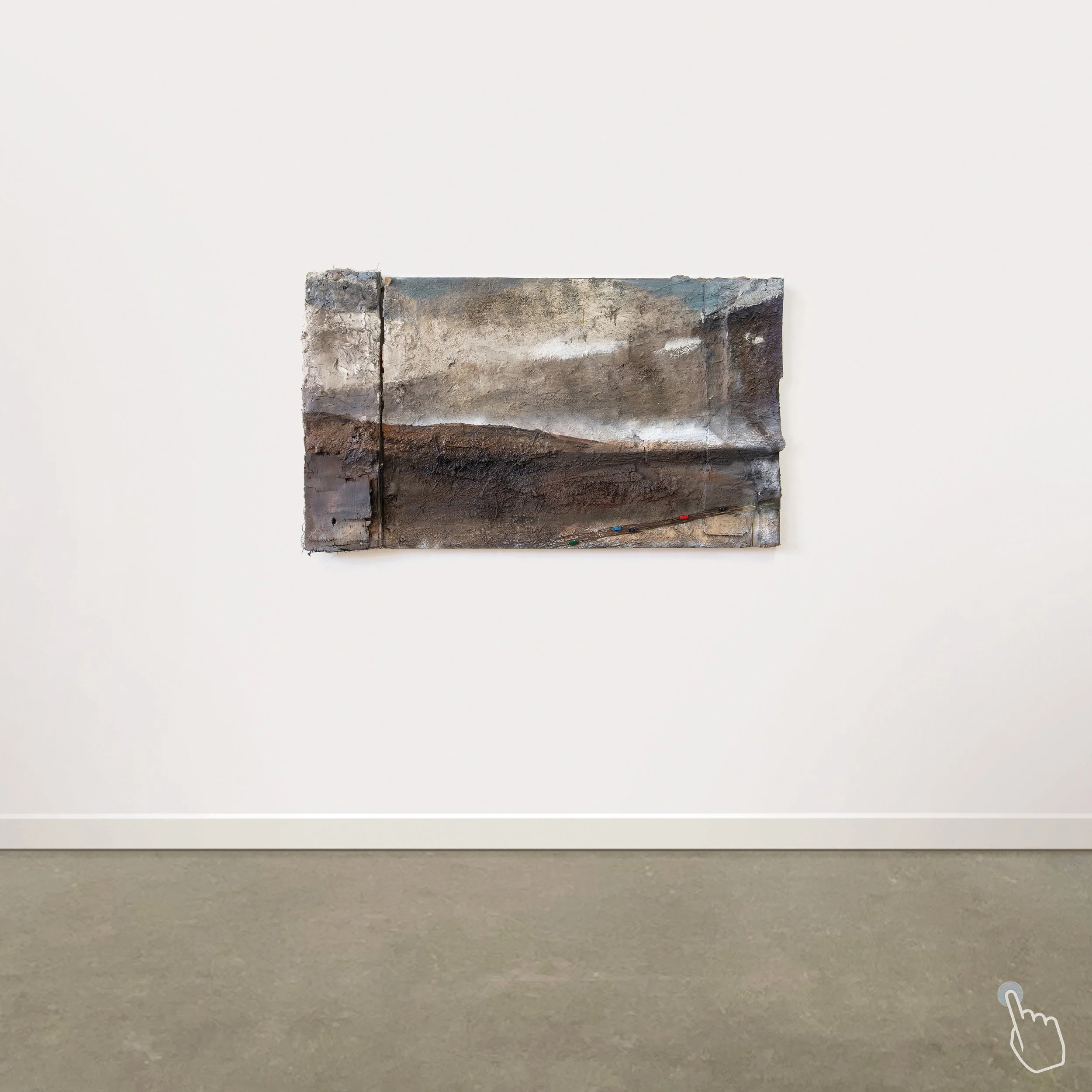
EXHIBITION DATES : 21/10 – 12/12/22
INTRODUCTION :
Hardwick draws partial inspiration from a specifically intimate relationship with location. This deep rooted understanding is cultivated in no small part through his idiosyncratic heritage where the family farm adjoined the Bristol Channel and included a large acreage of tidal salt marshes in the Portishead area of Bristol. The farm was first sliced in half by the M5 motorway and then again by the Royal Portbury Dock. Hardwick’s personal landscape, as with many across the country and further afield, continues to experience dramatic transition. In a very literal sense Hardwick has witnessed his personal history and the intertwined landscape of his childhood, become fractured and buried, in his case beneath a colossal car park where the family sheep once roamed. Remaining land now mostly awaits development, with hedges gone, marker posts installed, given up by its more recent custodians. Much of this land is now so heavily polluted that it could not be used for crops, so sits, fenced off, awaiting. In this strange transient zone, nature begins to temporarily reclaim, yet the construction of new massive depot Warehouses continues to proliferate, obliterating further. This same area is infused by the estuarial light of the nearby brown sea, no doubt coloured by countless years of pollution from its industrial neighbours. This new world, as is its rapacious tendency, has swallowed up the old…
Read more/less
Hardwick paints these landscapes that he sees but also the one that he remembers. Etched with those long gone sheep who were once herded on the saltings and ships once witnessed, now rotting or scrapped. These ghost like paintings often depict these edge-land
zones where other works draw inspiration from the more typically idyllic locations such as coast line and moorland. However, even these landscapes are filled with subtle reminders of human interference. This is a notion ever present throughout Hardwick’s paintings, where either the stark presence of the modern makes itself unambiguously known or where something deeply mournful lurks beneath a seemingly quiet, lyrical pastoralism. In all cases, the artists life, and mortality become fused with the fragility of his surroundings, both of which are becoming increasingly impeded upon. However there remains a sentimental ‘tug of war’ where in palpable contrast, past human intervention becomes submerged by the terrain which surrounds them. The intrusive impact of what was once claimed by ‘the modern world’, now disintegrates and becomes entombed. For example sites which had earlier been the location of army camps and gun placements during the war now physically fade along with their memory. So perhaps all is fleeting, as the passing of time and the earth itself seem to engulf all that temporarily sit upon it - adding to its delicate layers of geology. So what is perhaps most at risk of loss along the way is not only ourselves but our relationship to our earth for the time that we have here.
In 1900, Ferdinand Hodler described landscape painting as “the expression of pantheistic communion with nature, an attempt to express the whole of nature as experienced through the simplest pictorial means.” Hardwick also presents man through his separation from nature, acknowledging this more modern and supposedly enlightened position or condition. One of the criticism faced by landscape painting is that through it we are experiencing the artists version of nature as opposed to nature herself, where artist’s ego competes with the unbridled beauty of the natural world; this objective sets up a competition with the muse, wrangling with it for supreme evocation of the majestic. However Hardwick’s paintings subvert these notions by laying them bare, the experiences of mankind’s mark made tussles with nature for omnipotence. Man’s ego is knowingly presented versus the power of nature to reclaim, albeit with time.
Hardwick’s medium of working is also atypical, pushing what a painting can be. Works are heavily layered using peoples left overs - things found, traces from and surplus to the modern need, with different types of paint (often sourced from recycling centres or skips), plaster, plastics, ash, soils, pigments, felt, geotextile membrane, hay and other unconventional materials. To the resultant rich, delicate and seductive surface relevant artefacts are often added, creating reminders, triggering memories or reflecting fears intrinsic to a particular landscape. What results reflects the confusion, complexity and renewal which mirrors both the landscape and our own existence. The exquisite subtlety of colour and tone built within the surface is often contrasted by visceral rawness, appearing almost as if attacked, with indiscriminate fervour, evoking the unsentimentality of nature and reinforceing the ecological abandon of mankind too.
Hardwick’s entire oeuvre makes reference to concepts of change, memory, history, emotion and transience. That which appears delicate perhaps acknowledges much considered ecological fragility, but a weight and mass, places emphasis with the monumental, elemental power that the earth has over us, despite the allusion of our present power over it. We are just another layer in time and the archeology of the earth. If these paintings are to be seen as mournful then that which we mourn is perhaps our own loss of intimacy with our natural surroundings and our own temporary stain made. However, we also bare witness to natures raw and elemental beauty, through gestural power and her subtle hue. Through confrontation to our ego, she reminds us that some things are much bigger than we are and that some things are more enduring. The consequence of our contemporary concerns may become inconsequential in the long tun. I find that there is some hope in that.
Joseph Clarke, 2022
ONLINE CATALOGUE :
“Something will have gone out of us as a people if we ever let the remaining wilderness be destroyed; if we permit the last virgin forests to be turned into comic books and plastic cigarette cases; if we drive the few remaining members of the wild species into zoos or to extinction; if we pollute the last clear air and dirty the last clean streams and push our paved roads through the last of the silence.”
EXHIBITION ARTWORKS :
BIOGRAPHY :
Andrew Hardwick is a British landscape artist born in Bristol, England in 1961 where he still resides on a smallholding near Royal Portbury Docks. He is an elected Academician at the Royal West of England Academy and has featured in five solo exhibitions at Anima Mundi since 2011. Works have been exhibited extensively including numerous public shows most recently ‘Earth Digging Deep (British Art 1781-202) alongside Lamorna Birch, William Blake, John Constable, Thomas Gainsborough, William Henry Hunt, Richard Long, John Martin, David Nash, John Nash, Paul Nash, Samuel Palmer, John Piper, Yinka Shonibare, Stanley Spencer, Graham Sutherland and J. M. W. Turner among others. Works can be found in collections worldwide.
ART EDUCATION
1992 – 95BA (Hons) Fine Art, University of the West of England, Bristol
1995 – 97 MA Fine Art, University of Wales, Cardiff, Wales
SELECTED EXHIBITIONS
2022
The Last of the Silence (Solo), Anima Mundi, St Ives
Earth - Digging Deep (British Art 1781-2022), Royal West of England Academy, Bristol
Forgotten Land (Solo), The Spring, Havant
Wilderness and Warehouses (Solo), Cornerstone Arts Centre, Didcot
2021
Bath Society of Artists, Victoria Gallery, Bath
2020
Ground (solo), Colston Yard, Bristol
2019
Emerging Landscapes, Royal West of England Academy, Bristol
Summer Show, Royal Academy, London
Edgelands (solo), Stockport War Memorial Art Gallery, Stockport
Edgelands (solo), Atkinson Gallery, Millfield, Street
2018
Fragmented Land (solo), Ruskin Mill, Nailsworth
2017
Explorations of the Sky, Royal West of England Academy, Bristol
Wilderness (solo), South Hill Park, Bracknell
Remnant (solo), North Wall Arts Centre, Oxford
2016
Palimpsest (solo), Anima Mundi, St Ives
Summer Show, Royal Academy, London
2015
Scarred Wilderness (solo), Millennium, St Ives
2014
The Power of the Sea, Royal West of England Academy, Bristol
Material Gesture (solo), Sidcot Arts Centre, Sidcot
2013
Moor (solo), Millennium, St Ives
2011
Evanescent Earth (solo), Millennium, St Ives
2010
Tidal Wilderness (solo), Victoria Art Gallery, Bath
Autumn Show, Royal West of England Academy, Bristol
2009
Where the Sea Meets the Estuary (solo), Burton Art Gallery, Bideford
2008
Estuary (solo), Newport Museum & Art Gallery, Newport
2007
Atruim Gallery (solo), Bournmouth University, Bournemouth
2006
Forgotten Ground (solo), Central Art Gallery, Ashton-under-Lyne
2005
Fragmented Land (solo), Folkestone Museum and Art Gallery, Folkstone
2004
Between Land and Tide (solo), South Tipperary Arts Centre, Clonmel, Ireland
Partial View curated by Matthew Collins, Hot Bath Gallery, Bath
2003
Veiled Earth (solo), Otter Gallery, University College Chichester
2001
Earth, Sea and Sky (2 person), Kirkby Gallery, Liverpool
2000
Between Land and Water (solo), The Phoenix Gallery, Brighton
1999
Elemental Dynamics (solo), Flax International Arts Centre, Belfast
Transient Land (solo), The Viewpoint Gallery, Plymouth College of Art, Plymouth
1997
Deluge (solo), Chapter Arts Centre, Cardiff

































